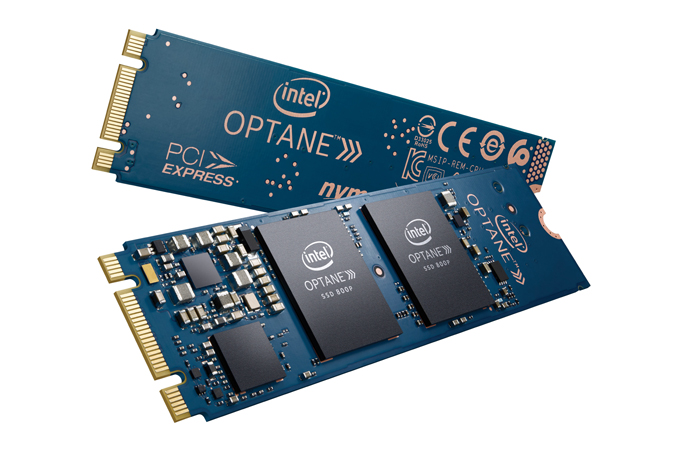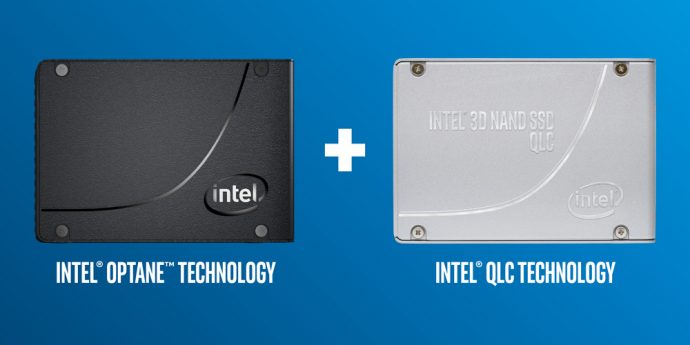Intel Optane AMA Reader's Recap, Storage, Caching and Memory Explained
Optane for Servers, Older PCs, and the Mainstream
Q: I'm interested in Optane drives for my company's servers. To get real capacity, we need multiple drives, and so we would get them in U.2 format.
Let's say the intended use case is a database server. To add 4-5 U.2 Optane drives to the system, is it recommended to use a PCIe RAID HBA (caching or not)? Or do you recommend plugging direct into boards w/a few U.2 ports? What is the recommend RAID topology when using 4-5 U.2 Optane drives?
A: Here's the short answer. We don't generally recommend RAID for data availability with databases. Instead, we recommend data replication or a virtualized software-defined storage platform.
Here's the long answer: A database server is a fantastic usage for an Intel Optane SSD P4800X. Just take a look at what Dimitri, the lead Open Source developer for MySQL had to say about using Optane. In his work, you will see that Dimitri uses MDM Raid 0 to combine drives into a single namespace. This is an option, assuming you have another method for data availability, such as an SDS or replication platform. A common approach we see is using DRBD style replication to another server. You’ll likely have replication of some form if data availability is a concern, because something as simple as a network cable or port, which can have much higher failure rates than SSDs, would knock you out of commission and force a failover to another node… Some other database technologies have higher level replication features built in, such as Microsoft SQL Server’s “Always On Replication” feature.
For big scale-up databases, we more often see Optane SSDs used for the log files and TempDB, where some lower cost NAND SSDs might be used for the database storage. Here’s an example reference architecture for Microsoft SQL implemented as such. Again, replication is key to a data availability strategy if you want to avoid down time.
Add-in hardware RAID controller options for NVMe SSDs are limited, often significantly limit performance, and add cost. You can use Linux MDRAID for a higher level of availability, but you can also consider an Intel product called VROC which is an alternative for NVMe SSDs directly attached to the CPU. If you insist on RAID within the node as your data availability model, take a look for Servers that support VROC.
Using RAID is becoming significantly less common as people move to NVMe SSDs, and embrace more cloud like models. It takes a pretty massive user base for your database to keep a big multi-core CPU, like the Intel Xeon Scalable Series busy, so most enterprises are virtualizing databases. A common approach to appreciate the performance of Direct Attached Storage for a database, but also have SAN like data availability is to embrace a Hyperconverged Software Defined Storage type platform, like VMware VSAN, Microsoft Server’s Storage Spaces Direct, Nutanix, Cisco Hyperflex, etc. We’ve worked with many customers to help them host the fanciest of databases on these HCI style platforms, where the Optane P4800X as a caching SSD is a good usage too.
Get Tom's Hardware's best news and in-depth reviews, straight to your inbox.
You can also use the Optane P4800X SSD or Intel Optane Persistent Memory DIMMs to displace DRAM. Check out how MySQL runs when you short the DRAM in favor of Intel Optane SSDs here.
Q: SSDs are now standard and the terminology for PCI-Express/M.2/U.2 based storage devices are finally household terms for enthusiasts and professionals. However, Optane and 3DXpoint technology still seems to be ‘theoretical’ or ‘impractical’ when compared to other SSD technologies for the average consumer. While the tech is definitely different, and likely better, I feel like Intel competes for the same space that the high end performance PCI-Express drives currently occupy. Does Intel have any plans to change this perception and try to make Optane more mainstream? What do you feel is the biggest hurdle to make Optane the standard for high performance storage solutions?
A: Don't think of Intel Optane as a purely storage device. Think of it as a whole system accelerator, as most systems are slowed down by their I/O. Intel Optane is all about eliminating the I/O bottleneck to accelerate system performance. Here's an example of what we mean.
Q: Does using Optane to cache storage increase the size, speed, or effectiveness of system memory? If not, is there a method for a typical home user to use Optane so that it functions more like system memory instead of storage?
A: We have a client solution that does exactly what you're asking. It's called Intel Optane Memory. You can find out more here.
Q: Could you use a normal NVMe M.2 SSD instead of Optane? What are some of the advantages of Optane versus the standard SSD? Also, what do you do if your computer has multiple HDDs? Can you use more than one Optane for the multiple drives?
A: Not exactly sure what you're asking, but Intel Optane is available as an NVMe SSD. Intel Optane is much faster than NAND SSDs. You could use Intel Optane as a cache in front of multiple HDDs, but depending on the workload a NAND SSD could also be used as cache--but with lower performance. If your last question is regarding Optane cache-to-storage capacity ratio, we've seen cache ratios as high as 20x. See this vSAN caching guideline as an example.
Q: Do you plan to have Optane support for older than Kaby Lake processors or processors lower than the Core processors (e.g. Pentium) in the future?
A: Intel Optane comes in many forms. Intel Optane Memory works on Kaby Lake systems and beyond. Intel Optane SSDs are available for all systems supporting NVMe drives. Intel Optane DC Persistent Memory is only supported on second generation Intel Xeon Scalable Processors.
Current page: Optane for Servers, Older PCs, and the Mainstream
Prev Page Retail Positioning, Consumer Pricing, Replacing DRAM Next Page Optane for Gaming, Latency Performance, and the Future of OptaneJoshua Simenhoff was a former Tom's Hardware community manager. He covered a wide range of topics, including PC hardware how-tos and articles with a focus on community engagement. His expertise lay in connecting with readers and providing practical, informative content about the latest technology.

